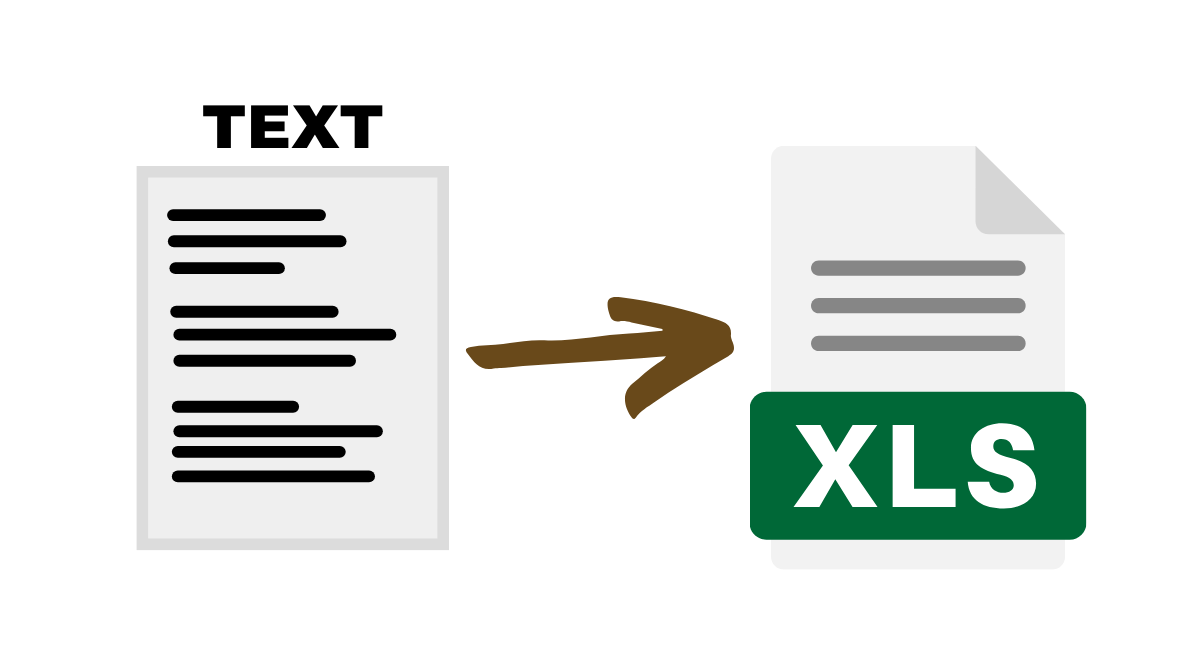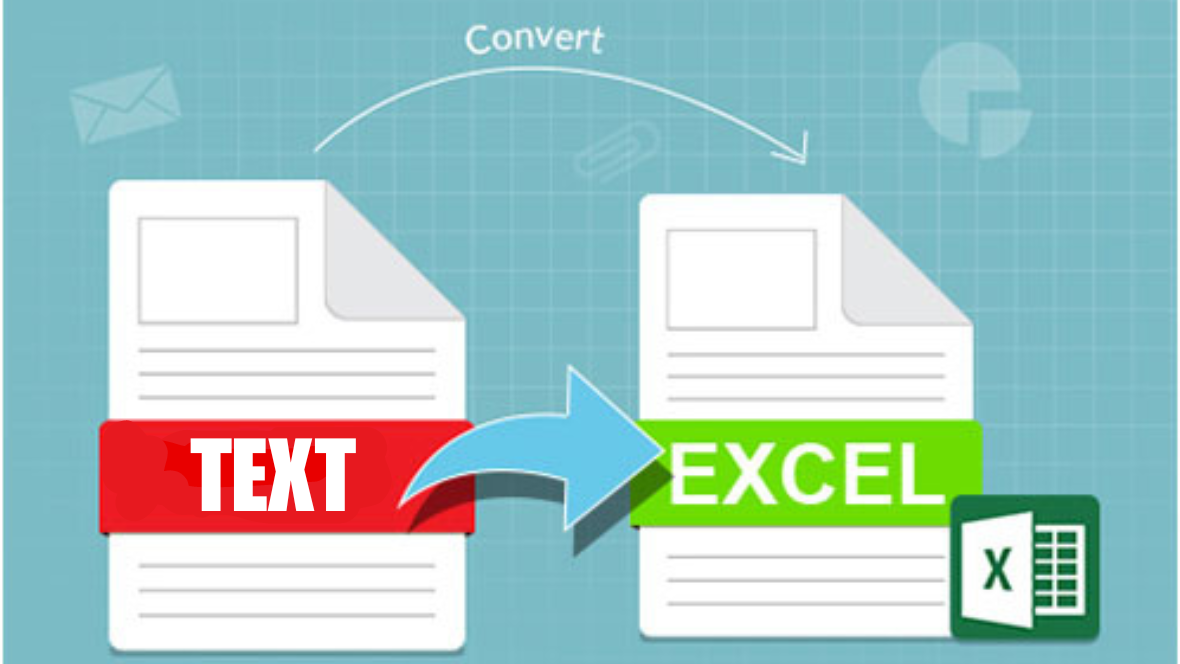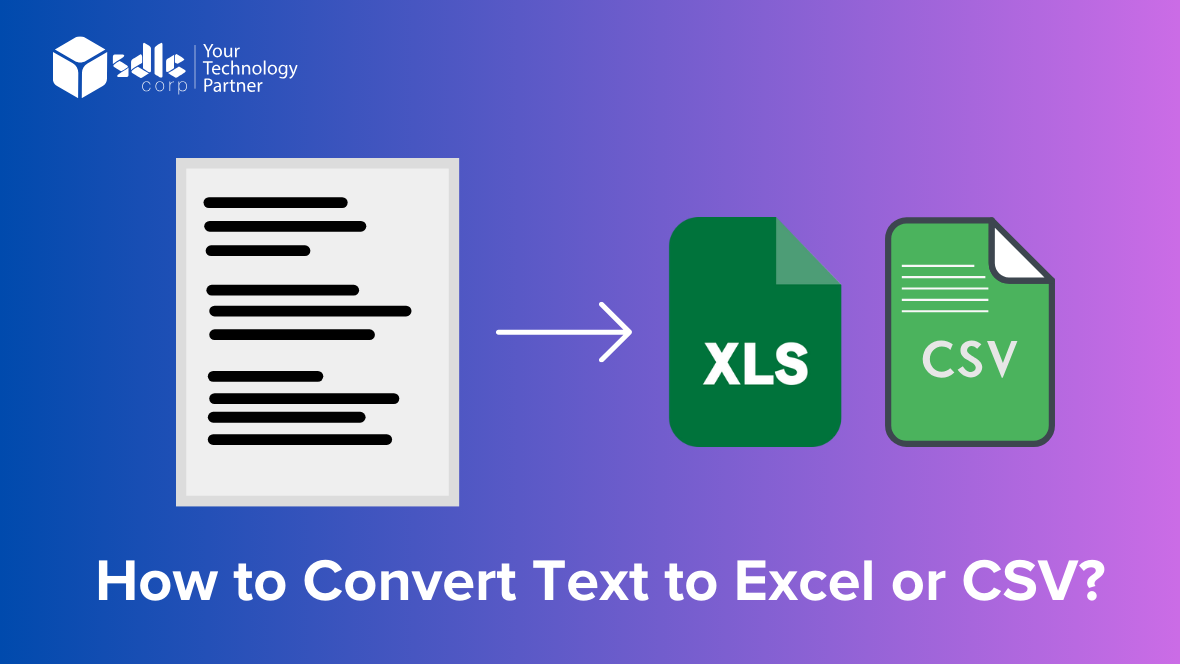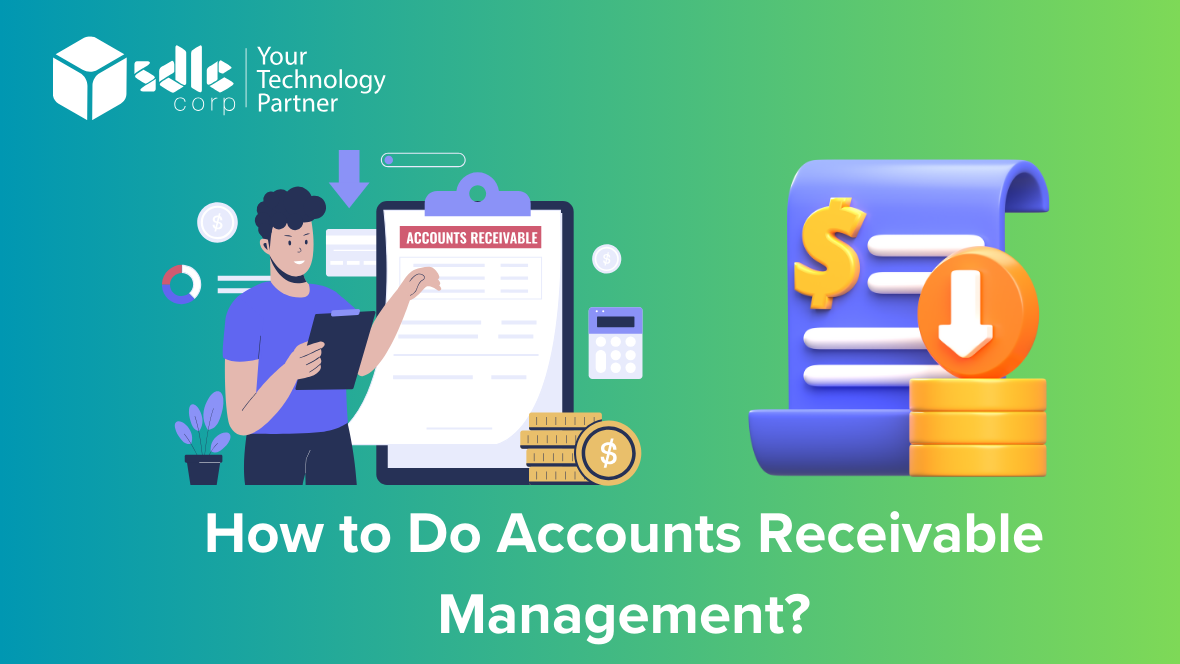Converting text (.txt) to Excel or CSV formats can be a straightforward process with the right tools and methods. Text files (.txt) are commonly used for storing plain text data, but they lack the structured formatting of spreadsheet formats like Excel (.xlsx) or CSV (Comma-Separated Values). By converting text files to Excel or CSV, you can organize and manipulate your data more effectively, making it suitable for various analytical and reporting tasks.
Converting Text to Excel or CSV:
- Open Text File: Begin by locating the text file (.txt) you want to convert. You can use any text editor or viewer to open and inspect the contents of the file.
- Review Text Structure: Before conversion, review the structure of your text file. Ensure that it is well-formatted and follows a consistent pattern, especially if you plan to convert it to a spreadsheet format.
- Choose Conversion Method:
- Excel: If you’re converting to Excel (.xlsx), you can use spreadsheet software like Microsoft Excel, Google Sheets, or LibreOffice Calc. Simply open a new spreadsheet and import the text file. Most spreadsheet applications provide import options that allow you to specify delimiters (such as tabs or commas) for parsing the text.
- CSV: To convert to CSV, you can use similar software as above. Create a new spreadsheet and import the text file, then save the file in CSV format. CSV files are plain text files with comma-separated values, making them widely compatible with various applications.
- Import Text File:
- In Excel, navigate to the “Data” tab and select “Get Data” or “From Text/CSV” option, depending on your version. Follow the prompts to import your text file.
- In Google Sheets, go to “File” > “Import” > “Upload” and select your text file. Choose the import settings according to your file’s structure.
- In LibreOffice Calc, use the “Text Import” dialog (found under “File” > “Open”) to import and convert the text file.
- Adjust Formatting: Adjust formatting allows users to refine the layout and styling of documents, ensuring consistency and professionalism in presentations or reports, which is particularly useful when converting image to Word documents to maintain visual integrity.
- Save as Excel or CSV: After making any necessary adjustments, save your file in the desired format. For Excel, use the “Save As” option and select the appropriate Excel format (.xlsx). For CSV, choose “Save As” and select CSV as the file type.
How Its Work?
Guide on how to convert text files (.txt) to Excel or CSV format, as well as converting PDF files to Excel:
- Converting Text (.txt) to Excel or CSV:
- Open Excel: Launch Microsoft Excel on your computer.
- Import Data: Go to the “Data” tab on the Excel ribbon.
- Get External Data: Click on “From Text” if you’re converting a .txt file.
- Select Text File: Choose your .txt file from the file explorer.
- Delimiter Selection: Specify the delimiter used in your text file (e.g., comma, tab, semicolon).
- Column Data Format: Adjust the column data format if necessary.
- Destination: Choose whether you want to load the data into an existing worksheet or a new one.
- Finish: Click “Finish” to import the data into Excel.
- Save as Excel or CSV: Once the data is imported, you can save it as an Excel (.xlsx) or CSV (.csv) file.
- Converting PDF to Excel: There are several methods to convert PDF to Excel. Here’s one common approach using Adobe Acrobat:
- Open PDF in Adobe Acrobat: Launch Adobe Acrobat on your computer.
- Export PDF to Excel: Go to the “Tools” tab and select “Export PDF.”
- Choose Excel Format: Select “Spreadsheet” as the export format.
- Settings: Adjust settings if necessary, such as specifying the range of pages to export.
- Export: Click “Export” and choose the location to save the Excel file.
- Open Excel: Once exported, open the Excel file to review and edit the data as needed.
- Save as Excel File: If required, save the file in Excel (.xlsx) format.
- Searching for Content: If you’re searching for specific content like “convert text to Excel” or “PDF to Excel” within a document or webpage, you can use the search function of your browser or PDF viewer. Simply press `Ctrl + F` (on Windows) or `Command + F` (on Mac) and type the keyword you’re looking for. This will highlight all instances of the keyword within the document, making it easier to find relevant information.
By following these steps, you should be able to convert text files to Excel or CSV format and convert PDF files to Excel while searching for specific keywords like “convert text to Excel” or “PDF to Excel” within the content.

1. How do I open a text file using Excel?
To provide a detailed description of opening a text file using Excel and adding an image to the text based on a keyword in the content of the paragraph, I’ll break down the process step by step:
- Open the Text File Using Excel:
- Open Microsoft Excel on your computer.
- Navigate to the “Data” tab on the Excel ribbon.
- Click on the “From Text” option in the “Get External Data” group. This will open a file explorer window.
- Browse to the location of the text file you want to open, select it, and click “Import.”
- In the Text Import Wizard, choose the appropriate settings for your text file (e.g., delimited or fixed-width), and then click “Finish.”
- Excel will import the text file data into a new worksheet.
- Add an Image to Text Based on a Keyword:
- Assuming you have a column in your Excel sheet containing the paragraphs of text, you can proceed to search for a keyword within this column.
- Click on the column header to select the entire column.
- Navigate to the “Home” tab on the Excel ribbon.
- Click on “Find & Select” in the “Editing” group, and then select “Find…” from the dropdown menu.
- In the “Find what” field of the Find and Replace dialog, enter the keyword you want to search for within the text.
- Click “Find All” to locate all instances of the keyword within the selected column.
- Now, assuming you have an image corresponding to this keyword:
- Insert the image into Excel by clicking on the “Insert” tab on the ribbon.
- Select “Pictures” from the “Illustrations” group, and then navigate to the location of your image file. Select the image and click “Insert.”
- Resize and position the image as desired within the Excel worksheet.
Alternatively, if you want to dynamically link images based on keywords, you may need to use VBA (Visual Basic for Applications) scripting to achieve this automation. This involves writing a script that scans the text column, finds instances of the keyword, and then inserts corresponding images dynamically.
- Save Your Changes: After adding the image to the text, ensure to save your Excel file to preserve the changes.
By following these steps, you can open a text file using Excel and add an image to the text based on a keyword in the content of the paragraph.
"Efficient Methods for Converting Text Files to Excel or CSV Format"
2. How can I use Excel's 'Get Data' feature to open a text file?
“Excel’s ‘Get Data’ feature” refers to the capability within Microsoft Excel to import data from various external sources directly into your Excel workbook. Here are seven detailed descriptions of how to use this feature:
- Importing from a File:
- Open Excel and navigate to the “Data” tab.
- Click on “Get Data” and choose “From File.”
- Select the type of file you want to import (e.g., Excel, CSV, Text, XML) and locate the file on your computer.
- Follow the prompts to import the data into Excel, specifying any relevant options such as delimiters or headers.
- Connecting to a Database:
- Click on “Get Data” and choose “From Database.”
- Select the type of database you want to connect to (e.g., SQL Server, Access, Oracle).
- Enter the necessary connection details such as server name, database name, and authentication credentials.
- Choose the specific tables or queries you want to import into Excel.
- Web Data:
- Click on “Get Data” and choose “From Web.”
- Enter the URL of the webpage containing the data you want to import.
- Excel will display a navigator window showing the tables or elements available on the webpage.
- Select the data you want to import and click “Load” to bring it into Excel.
- Querying APIs:
- Click on “Get Data” and choose “From Other Sources,” then “From Web.”
- Enter the URL of the API endpoint you want to query.
- Excel will prompt you to enter any required parameters for the API request.
- Customise the query as needed, then load the data into Excel.
- Importing from Azure Data Lake:
- Click on “Get Data” and choose “From Azure.”
- Select “Azure Data Lake” and enter your Azure account credentials.
- Navigate through your Azure Data Lake storage to find the file or folder you want to import.
- Specify any additional options such as file format or data preview before loading into Excel.
- Data Transformation:
- After importing data into Excel, use the “Transform Data” option to open Power Query Editor.
- Here, you can perform various transformations on your data, such as filtering, sorting, aggregating, and merging.
- Power Query Editor provides a user-friendly interface with a wide range of tools for data manipulation and cleansing.
- Automatic Refresh:
- Once you’ve imported external data into Excel, you can set up automatic refresh options to keep your data up-to-date.
- Click on “Data” > “Queries & Connections” to view your data connections.
- Right-click on a connection and select “Properties” to configure refresh settings such as frequency and credentials.
- Excel will automatically update the imported data according to your refresh settings, ensuring that your workbook always reflects the latest information from external sources.
By utilising Excel’s “Get Data” feature and its various options, you can easily import data from a wide range of sources, perform necessary transformations, and keep your workbook updated with the latest information.

3. How can I convert text to Excel using online converters?
Here are detailed descriptions of 7 online converters that can convert text to Excel format:
- Zamzar:
Zamzar is a popular online file conversion platform that supports converting text files to Excel spreadsheets seamlessly. Users can simply upload their text files (in formats like TXT, CSV, etc.) to Zamzar’s website and choose Excel (XLS or XLSX) as the output format. The conversion process is quick and efficient, and the resulting Excel file maintains the structure and formatting of the original text document.
- OnlineConvertFree:
OnlineConvertFree is a user-friendly online conversion tool that offers a simple solution for converting text files to Excel format. Users can upload their text files from their device or provide a link to the file online. OnlineConvertFree supports various text formats, including TXT, CSV, and TSV, and allows users to convert them to Excel (XLS or XLSX) with just a few clicks. The platform ensures the privacy and security of uploaded files and provides the converted Excel file for download promptly.
- Convertio:
Convertio is a versatile online file conversion tool that supports converting text documents to Excel spreadsheets effortlessly. Users can upload text files from their computer, Dropbox, or Google Drive, or provide a URL for conversion. Convertio supports multiple text formats such as TXT, CSV, and TSV and offers options to customise the conversion settings, including choosing the Excel format (XLS or XLSX), specifying delimiter, and more. The converted Excel file is available for download within minutes.
- Smallpdf:
Smallpdf is known for its simplicity and efficiency in converting various file formats, including text to Excel. Users can drag and drop their text files or upload them directly from their device, Google Drive, or Dropbox. Smallpdf supports common text formats like TXT, CSV, and TSV and converts them to Excel (XLS or XLSX) accurately. The platform ensures the security of uploaded files and provides a user-friendly interface for seamless conversion. Users can download the converted Excel file instantly.
- Online-Convert:
Online-Convert offers a reliable online solution for converting text files to Excel format. Users can upload their text files from their computer or provide a URL for conversion. Online-Convert supports various text formats, including TXT, CSV, and TSV, and allows users to customise conversion settings if needed. Users can choose the Excel format (XLS or XLSX) and adjust other parameters like delimiter, encoding, etc. The platform ensures fast and accurate conversion, delivering the Excel file for download promptly.
- Aconvert.com:
Aconvert.com is a versatile online file conversion tool that supports converting text documents to Excel format seamlessly. Users can upload their text files from their devices or provide a URL for conversion. Aconvert.com supports popular text formats like TXT, CSV, and TSV and offers options to customise the conversion settings, including choosing the Excel format (XLS or XLSX) and specifying a delimiter. The platform ensures the privacy and security of uploaded files and provides the converted Excel file for download promptly.
- FreeFileConvert:
FreeFileConvert is a comprehensive online file conversion platform that supports converting text files to Excel format effortlessly. Users can upload their text files from their computer or provide a URL for conversion. FreeFileConvert supports various text formats such as TXT, CSV, and TSV and allows users to select the Excel format (XLS or XLSX) for conversion. The platform ensures fast and accurate conversion, delivering the Excel file for download securely.
These online converters offer convenient and efficient solutions for converting text documents to Excel spreadsheets, catering to the diverse needs of users with their user-friendly interfaces and customizable conversion options.
"Quick and Easy: Converting Text Files to Excel or CSV Spreadsheets"
How can SDLCCorp automate data extraction and processing to enhance efficiency and accuracy?
- Introduction to SDLCCORP:
SDLCCORP is a cutting-edge software solution designed to automate data extraction and processing tasks efficiently. With its advanced algorithms and user-friendly interface, SDLCCORP streamlines the workflow, saving time and resources for businesses across various industries.
- Seamless Integration:
Seamless integration facilitates smooth collaboration and data exchange, essential for optimizing workflows within the purchasing department, for instance, when integrating procurement software with inventory management systems.
- Automated Data Extraction:
SDLCCORP employs sophisticated techniques to extract data accurately from diverse sources. Its robust algorithms can identify and extract relevant information from unstructured data, such as text, images, and tables, with precision. Whether it’s extracting customer information, financial data, or product details, SDLCCORP streamlines the process, minimising errors and enhancing data accuracy.
- Customizable Data Processing:
With SDLCCORP, users have the flexibility to customise data processing according to their specific requirements. Whether it’s data cleansing, normalisation, or validation, SDLCCORP offers a range of customizable options to ensure data integrity and consistency. Users can define rules, filters, and workflows to automate the processing of extracted data, reducing manual errors and enhancing efficiency.
- Integration with JPG to Excel Conversion:
SDLCCORP incorporates advanced features for converting JPG images to Excel format seamlessly. This integration allows users to extract data from image files, such as invoices, receipts, or forms, and convert them into structured Excel sheets automatically. By combining data extraction with JPG to Excel conversion, SDLCCORP offers a comprehensive solution for digitising and processing information from diverse sources.
- Streamlined Workflow Automation:
SDLCCORP streamlines the entire data extraction and processing workflow, from data capture to analysis and reporting. Its intuitive interface and workflow automation capabilities enable users to define tasks, schedules, and triggers for automated processing. Whether it’s scheduled batch processing or real-time data extraction, SDLCCORP ensures timely and accurate results, empowering organisations to make informed decisions based on reliable data.
- Enhanced Efficiency and Accuracy:
By automating data extraction and processing with SDLCCORP, organisations can achieve significant improvements in efficiency and accuracy. By reducing manual intervention and streamlining workflows, SDLCCORP minimises the risk of errors and inconsistencies, leading to faster decision-making and better business outcomes. With its advanced capabilities and seamless integration, SDLCCORP offers a competitive edge in today’s data-driven environment.
In conclusion, SDLCCORP revolutionizes the way organisations extract, process, and utilise data, offering a comprehensive solution for automating data extraction and processing tasks. With its advanced features, seamless integration, and customizable options, SDLCCORP enhances efficiency, accuracy, and productivity, empowering organisations to unlock the full potential of their data.
Conclusion
Converting text files (.txt) to Excel or CSV format provides a seamless way to organize, analyze, and manipulate textual data using spreadsheet software. By following a few simple steps, users can efficiently transform raw text data into structured Excel or CSV files, facilitating easier data management and analysis. Similarly, converting PDF tables to Excel enables users to extract tabular data from PDF documents and import it into Excel for further processing and analysis. Whether dealing with plain text files or tabular data embedded within PDFs, the conversion process empowers users to harness the capabilities of spreadsheet software for enhanced data utilisation and decision-making. This conversion process significantly streamlines data handling workflows, making it a valuable tool for various analytical, research, and business tasks.
FAQs
1. How can I convert a text file (.txt) to Excel or CSV format?
To convert a text file to Excel or CSV, you can utilise Microsoft Excel’s import feature. Simply open Excel, navigate to the “Data” tab, click on “From Text/CSV,” select your .txt file, and follow the prompts to import and format the data into a spreadsheet.
2. What are the steps involved in converting a text file to Excel or CSV?
The process involves opening Excel, selecting the “Data” tab, choosing “From Text/CSV,” locating and selecting your .txt file, specifying the import settings (e.g., delimiter or fixed-width), and then mapping the columns accordingly before finalising the import.
3. Is it possible to convert a PDF table to Excel?
Yes, converting a PDF table to Excel is feasible. You can achieve this using Adobe Acrobat’s export feature or specialised software like PDF converters. Alternatively, you can use online tools or specific Excel functionalities to extract and format the table data from the PDF into an Excel sheet.
4. How do I convert a PDF table to Excel using Adobe Acrobat?
In Adobe Acrobat, open the PDF file containing the table, then navigate to “Export PDF” under the “File” menu. Choose “Spreadsheet” as the export format and select Microsoft Excel as the file type. Follow the prompts to save the converted Excel file to your desired location.
5. Can I automate the process of converting text files to Excel or CSV?
Yes, automation is possible using scripting languages like Python or through Excel macros (VBA). With Python, you can write scripts to read the text file, manipulate the data, and output it as an Excel or CSV file. Similarly, Excel macros can be programmed to perform batch conversions or automate repetitive tasks related to importing text files.
Contact Us
Let's Talk About Your Project
- Free Consultation
- 24/7 Experts Support
- On-Time Delivery
- sales@sdlccorp.com
- +1(510-630-6507)















